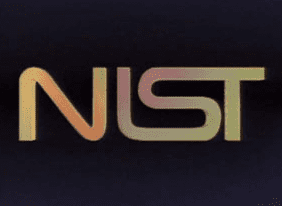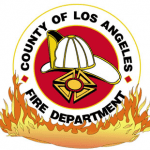 Paradigm: A set of assumptions, concepts, values, and practices that constitute a way of viewing reality for the community that shares them . Recent research conducted by Underwriter’s Laboratory (UL) and the National Institute of Standards and Technology (NIST) have revealed a flaw in a long standing paradigm about fire attack. As this blog does not focus on matters of strategy and tactics, we will focus on the situational awareness implications of the finding of the UL/NIST research.
Paradigm: A set of assumptions, concepts, values, and practices that constitute a way of viewing reality for the community that shares them . Recent research conducted by Underwriter’s Laboratory (UL) and the National Institute of Standards and Technology (NIST) have revealed a flaw in a long standing paradigm about fire attack. As this blog does not focus on matters of strategy and tactics, we will focus on the situational awareness implications of the finding of the UL/NIST research.
The old paradigm
 When I was a new firefighter and, for the most part throughout my career, I was always taught (and subsequently taught others) that we fight fires from the unburned side of the structure. For if we were to make entry from the burning side, we would “push” the fire through the structure. This would increase damage and reduce the survivability of victims. The problem is, this paradigm, while widely adopted, was never proven scientifically (and if I am incorrect in that, someone please post a comment on the article and direct me to the research so I can add it to this article).
When I was a new firefighter and, for the most part throughout my career, I was always taught (and subsequently taught others) that we fight fires from the unburned side of the structure. For if we were to make entry from the burning side, we would “push” the fire through the structure. This would increase damage and reduce the survivability of victims. The problem is, this paradigm, while widely adopted, was never proven scientifically (and if I am incorrect in that, someone please post a comment on the article and direct me to the research so I can add it to this article).
Science notwithstanding, this tactic has become the standard.
NIST/UL Video
NIST/UL Fire Dynamics in the 21st Century
 As it was noted in the video, [clickandtweet handle=”richgasaway” hashtag=”samatters” related=”samatters” layout=”” position=””]”What the hell can a scientist teach me about how to put out a fire?”[/clickandtweet] It turns out, the answer is PLENTY! But only if the finding of the research can change a paradigm. And changing paradigms is not a simple task.
As it was noted in the video, [clickandtweet handle=”richgasaway” hashtag=”samatters” related=”samatters” layout=”” position=””]”What the hell can a scientist teach me about how to put out a fire?”[/clickandtweet] It turns out, the answer is PLENTY! But only if the finding of the research can change a paradigm. And changing paradigms is not a simple task.
In his book, “The Structure of Scientific Revolutions”, Thomas Kuhn made several significant claims about how scientific knowledge has advanced. He noted that at times throughout history, fields of study have undergone what he termed “paradigm shifts”, which created new understandings of the way things operate in the world that, previously, would have never been considered valid. He further noted that pure scientific evidence is not enough to create a new paradigm. [clickandtweet handle=”richgasaway” hashtag=”samatters” related=”samatters” layout=”” position=””]The shift occurs when there is a consensus of the community.[/clickandtweet] He noted that competing paradigms share incompatible beliefs about reality that cannot be reconciled. Objective proof is not enough and an accounting must be made for subjective perspectives (the view and opinions of the community) as well.
 There certainly have been more than a fair share of subjective opinions being tossed around on social media and in the comment boxes on Internet sites. I’m certainly not trying to stir controversy, but I would encourage readers and viewers of this material to have an open mind and consider the possibilities that the research is telling us something valuable.
There certainly have been more than a fair share of subjective opinions being tossed around on social media and in the comment boxes on Internet sites. I’m certainly not trying to stir controversy, but I would encourage readers and viewers of this material to have an open mind and consider the possibilities that the research is telling us something valuable.
It’s difficult to break way from previously held notions and beliefs. And it doesn’t help that we are such creatures of habit and many of us, in general, have a disdain for change… especially if that change makes us uncomfortable. The findings of this research make many of us uncomfortable because we have done things the same way, for so long, with relatively good results, that we are not keen on the idea of someone messing that all up.
Not everyone’s singing the praises
I recently conducted a situational awareness program and made mention of this research during the program and described it as a potential “game changer” for how firefighters do their jobs. On the break, I was ushered off to a corner and instructed not to discuss that research because the department has not accepted the findings yet. They’re the customer and I’m just the talking head, so I complied with their directive and said nothing more about it to the attendees.
[clickandtweet handle=”richgasaway” hashtag=”samatters” related=”samatters” layout=”” position=””]Censuring the discussion is not going to make the findings of the research go away.[/clickandtweet] Hopefully the discussions… and the research… continue and we all become smarter firefighters, safer firefighters, and our situational awareness remains strong!
Some are singing the praises
Los Angeles County FD Exterior Water Application Training Video
Additional Resources
UL Fire Safety Research Institute
NIST Engineering Laboratory
Chief Gasaway’s Advice
 Change is difficult on all of us. However, it is also essential that we keep an open mind and listen and learn from new technologies, new practices and new findings in science. Attacking the messenger or shutting down, holding our breath and throwing a tantrum will inhibit learning. In many organizations, change comes very slowly and often with much resistance. Some organizations adapt very easily and try new things all the time. Sometimes the risk of trying new things (early adapters) pays off, sometimes it doesn’t. Sometimes delaying the acceptance of change (late adapters) pays off, and sometimes it doesn’t. Sometimes refusing to change altogether (resistors) pays off, and sometimes it doesn’t. My advice is take a deep breath and see where all this leads. My situational awareness, derived in this case from early observations and gut feel is, there will be change on our horizon.
Change is difficult on all of us. However, it is also essential that we keep an open mind and listen and learn from new technologies, new practices and new findings in science. Attacking the messenger or shutting down, holding our breath and throwing a tantrum will inhibit learning. In many organizations, change comes very slowly and often with much resistance. Some organizations adapt very easily and try new things all the time. Sometimes the risk of trying new things (early adapters) pays off, sometimes it doesn’t. Sometimes delaying the acceptance of change (late adapters) pays off, and sometimes it doesn’t. Sometimes refusing to change altogether (resistors) pays off, and sometimes it doesn’t. My advice is take a deep breath and see where all this leads. My situational awareness, derived in this case from early observations and gut feel is, there will be change on our horizon.
Action Items
 Discuss why you feel people resist change so vigorously.
Discuss why you feel people resist change so vigorously.- Discuss some of the outward displays of change resistance you have observed (or displayed).
- Discuss the challenges and risks associated with trying new techniques.
- Discuss a technique that was used 20-40 years ago that has fallen out of favor in the fire service and discuss the challenges the early adapters must have had to overcome to prevail.
_____________________________________________________
If you are interested in taking your understanding of situational awareness and high-risk decision making to a higher level, check out the Situational Awareness Matters Online Academy.
CLICK HERE for details, enrollment options and pricing.
__________________________________
Share your comments on this article in the “Leave a Reply” box below. If you want to send me incident pictures, videos or have an idea you’d like me to research and write about, contact me. I really enjoy getting feedback and supportive messages from fellow first responders. It gives me the energy to work harder for you.
Thanks,
Email: Support@RichGasaway.com
Phone: 612-548-4424
Facebook Fan Page: www.facebook.com/SAMatters
Twitter: @SAMatters
LinkedIn: Rich Gasaway
YouTube: SAMattersTV
iTunes: SAMatters Radio



